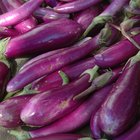Whether you know it as West African peanut soup, Ghanian groundnut stew, Nkate Nkawan or Maafe, delicious peanut-tomato stew makes a hearty, protein-packed meal which can be enjoyed either with chicken or as a vegetarian entrée. It is also popularly served during Kwanzaa. While no one knows exactly when or where the first groundnut stew was made, historians generally cite West Africa as the meal’s place of origin.
From West Africa via South America
Known as groundnuts elsewhere in the world, the legumes are not native to Africa. They were brought to the continent from South America by Spanish and Portuguese colonists. Therefore, though we don’t know when the first African groundnut stew was made, we do know it couldn’t have been before the groundnuts themselves arrived in Africa in the early 1560s. From there, variations on the stew began appearing throughout West Africa, especially Nigeria, the Gambia and Senegal.
One dish, many twists
In general, the stew can be thought of as a kind of sauce served over starch and made with groundnuts, tomatoes, a variety of vegetables, and usually chicken or another meat. Additional ingredients vary by region, and can include root vegetables like yams, cooked greens, and various spices. African cooks generally spoon groundnut stew over rice, couscous, millet or sweet potatoes. Like the ingredients of the groundnut stew itself, what starch it is served with, and what condiments accompany it, depends on the region.
Sample recipe
The Congo Cookbook, an encyclopedic web site of African cooking traditions, offers a version made with peanut butter or roasted ground peanuts, chicken, tomatoes, yams, onions, garlic, chile peppers, and a choice of vegetables including okra, squash, eggplant, beans and corn. The recipe calls for spooning the stew over rice and serving it with a choice of condiments such as sliced tropical fruit, chutney, hardboiled eggs, African hot sauce, shredded lettuce or parsley, chopped nuts and shredded coconut.
The Kwanzaa Connection
Because the American holiday Kwanzaa began as a way to celebrate African-American heritage, groundnut stew often appears as an integral dish of the celebration feast.
Groundnuts came over to this country with the enslaved Africans, who called them goobers or pindars. Scholar Joseph E. Holloway cites records of both George Washington and Thomas Jefferson referring to the nuts in the late 1790s. Clearly the African legume had become an important part of the American diet by the eighteenth century. Records exist of slaves making soup and countless other meals from groundnuts during that time period.
African-Americans often serve groundnut stew during Kwanzaa as a way of celebrating the legume’s important ties to their own African roots, as well as because of its sustaining presence during the brutal days of slavery in this country.
Groundnut, Peanut or Earthnut?
What Africans call “groundnuts”, Americans know as “peanuts.” Confusingly, when American botanists speak of groundnuts, they are referring to Apios Americana, an important food staple of Native Americans in the pre-Colonial days. This perennial, high-protein tuber, sometimes known as the “Indian potato,” deserves to be better known, both as alternative crop and one which helped Native Americans and Pilgrims through some bleak winters.
But the legume of African peanut/groundnut stew fame is, in fact, the annual vine Arachis hypogaea, which most Americans know as the peanut. This legume grows in both Africa and the southern U.S., and originated in South America. Both Arachis hypogaea and Apios Americana are known as “earthnut,” depending on the part of the world. But in general, when referring to the legume used in the West African stew, groundnut is more commonly used.
Related Articles

African Food Facts

Hopi Indian Foods

Facts About Italian Cuisine

Difference Between Soba and Udon Noodles

The History of Asian Food

The Mayan Diet

Traditional French Easter Food

Neolithic Diets

What Foods Do People in Ireland Eat?
The History of Teriyaki Sauce

The Most Popular Foods of Puerto Rico

Nigerian Herbs & Spices

Difference Between Gumbo and Etouffee

Traditional Irish Foods for Lunch

History of Mardi Gras Beads

Southeast Asian Diet & Nutrition

Classic Russian Spices

About Family Life in Colonial New Jersey

Different Names for an Eggplant

Afghan Spices
References
Writer Bio
Ellen Douglas has written on food, gardening, education and the arts since 1992. Douglas has worked as a staff reporter for the Lakeville Journal newspaper group. Previously, she served as a communication specialist in the nonprofit field. She received her Bachelor of Arts from the University of Connecticut.